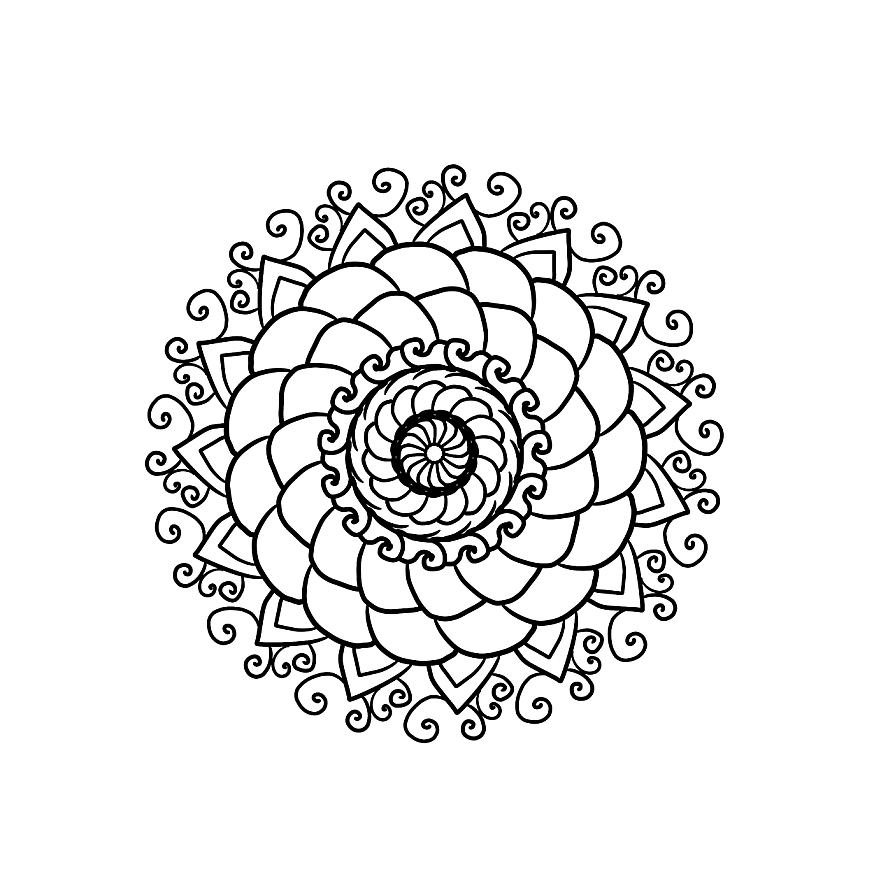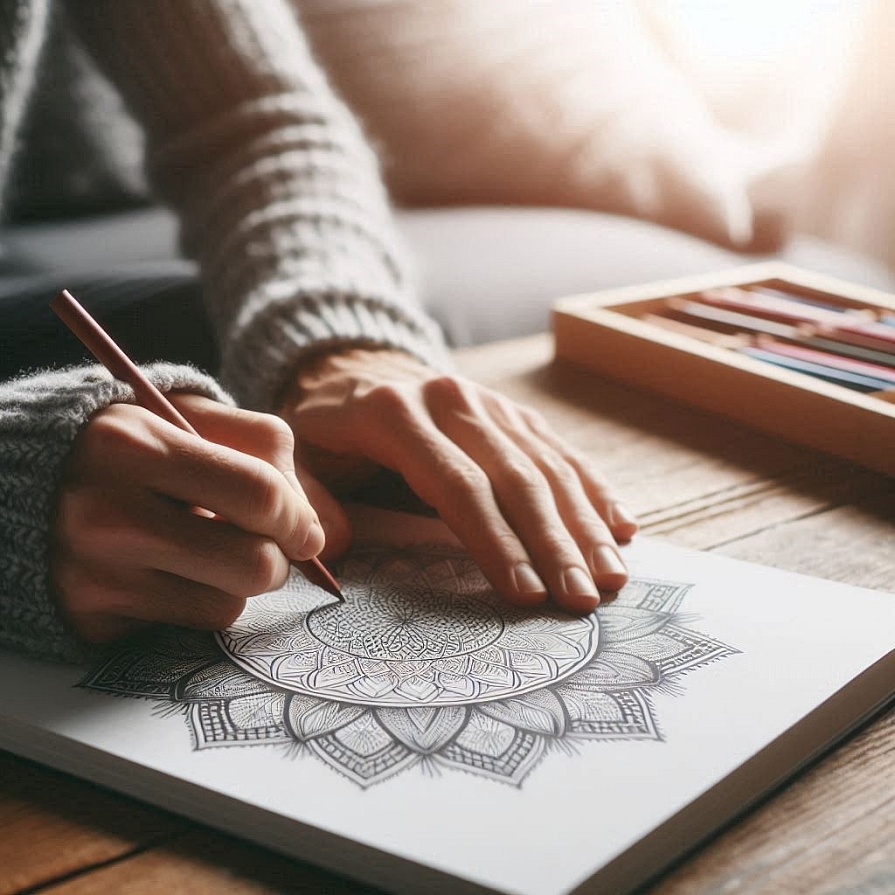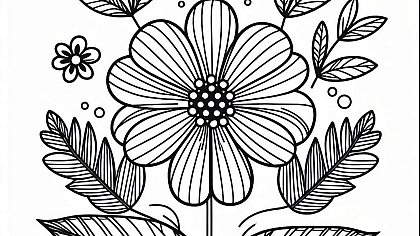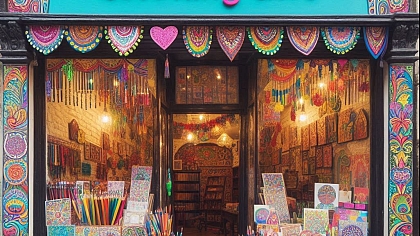
Colour Your Way to Calm: How Colouring Reduces Stress and Anxiety
Colouring is often seen as a simple childhood activity, but over the years, research has shown that the benefits of colouring extend far beyond the world of crayons and colouring books. It has emerged as a popular and effective way to alleviate stress and anxiety, offering a therapeutic outlet for people of all ages. With its calming, meditative qualities, colouring provides a much-needed escape from the complexities of daily life, fostering mindfulness, creativity, and emotional well-being. Join us to explores how colouring can reduce stress and anxiety, offering a closer look at its therapeutic benefits and the science behind it.
The Connection Between Colouring and Stress Relief

Stress is an inevitable part of modern life. From demanding work schedules to personal challenges, the pressures of daily life can easily take a toll on our mental and emotional health. Many individuals search for ways to manage their stress, with options ranging from physical exercise to mindfulness practices. However, one surprisingly effective tool in stress management is colouring.
Colouring allows individuals to focus on a single, creative task without the distractions that often exacerbate stress. By concentrating on the act of colouring, whether it’s filling in the intricate patterns of a mandala or shading the petals of a flower, people can momentarily forget about their worries. This mindfulness aspect of colouring helps to quiet the mind, creating a sense of calm.
In addition to the mindfulness benefits, the act of colouring itself is inherently soothing. Studies have shown that engaging in creative activities can trigger a relaxation response in the body, lowering heart rate and reducing stress hormones such as cortisol. This relaxation response is similar to the effects of meditation, as both practices encourage focused attention and a break from everyday stressors.
Colouring as a Mindfulness Practice

At the heart of colouring’s therapeutic effects is mindfulness. Mindfulness is the practice of being fully present in the moment, paying attention to thoughts, feelings, and sensations without judgment. By focusing solely on the act of colouring, individuals can immerse themselves in the present moment, effectively disengaging from negative thoughts that may contribute to stress and anxiety.
Mindfulness has been shown to have numerous mental health benefits. Regular mindfulness practice can help individuals manage their emotions, improve their ability to concentrate, and reduce anxiety. When combined with the simple, yet engaging act of colouring, it provides a unique and accessible way to practice mindfulness.
The act of colouring also encourages a form of active relaxation. Unlike other forms of relaxation that require you to lie still, such as deep breathing or meditation, colouring allows you to remain physically engaged while also calming your mind. This balance of activity and relaxation can help break the cycle of stress, offering both a creative outlet and a mental escape.
The Science Behind Colouring and Anxiety Reduction

While the calming effects of colouring are widely acknowledged, the scientific understanding of why it works remains a subject of interest. Research has shown that engaging in artistic activities, including colouring, stimulates the brain in a way that promotes relaxation. When we colour, we activate both the left and right hemispheres of the brain. The left hemisphere, responsible for logical thinking, is engaged by the decision-making involved in selecting colours, while the right hemisphere, associated with creativity, is activated by the act of colouring itself.
This balance of cognitive engagement allows for a unique form of relaxation. As we engage in a creative task, our minds are distracted from worries and anxieties, providing temporary relief from the pressures of daily life. Studies have also shown that engaging in activities like colouring can reduce the body’s physical response to stress, including a decrease in blood pressure and heart rate. This physiological shift helps signal to the brain that the body is safe and no longer under threat, which is crucial in managing anxiety.
Moreover, colouring promotes a state of flow, a psychological concept introduced by psychologist Mihaly Csikszentmihalyi. Flow occurs when an individual is fully immersed in an activity, losing track of time and becoming absorbed in the process. This state of complete engagement is often accompanied by feelings of deep satisfaction and joy. Colouring can induce this state of flow, providing a temporary escape from the stressors that may cause anxiety.
The Therapeutic Benefits of Colouring for Anxiety and Depression
For individuals who struggle with anxiety and depression, colouring can serve as a gentle and effective therapeutic tool. Both anxiety and depression are often characterized by negative thought patterns and an overwhelming sense of being unable to control one’s emotions. Colouring provides a creative outlet for expression, offering a sense of control and accomplishment. By choosing colours and creating something visually appealing, individuals can experience a sense of empowerment and self-expression, which is crucial for mental health.
Colouring also encourages a break from rumination, a common symptom of anxiety and depression. Rumination involves repeatedly dwelling on negative thoughts, often leading to an exacerbation of feelings of helplessness or hopelessness. The focused attention required for colouring can help interrupt these negative thought patterns, providing a healthy distraction. Furthermore, the process of completing a colouring page can give individuals a sense of achievement and purpose, which is often lacking in those suffering from depression.
Many therapists and mental health professionals have begun to incorporate colouring as part of their treatment plans for individuals with anxiety and depression. The simplicity and accessibility of colouring make it a valuable tool for individuals who may struggle with more traditional forms of therapy or find it difficult to engage in complex mental exercises. As a non-verbal and non-confrontational activity, colouring can help individuals express emotions and feelings that may be difficult to articulate.
Colouring as a Social Activity

While colouring is often seen as a solitary activity, it can also be a social experience that promotes connection and shared relaxation. Group colouring activities, whether in a therapeutic setting or a casual gathering with friends, can help individuals bond over a common goal. These social interactions can provide additional emotional support, which is especially beneficial for those who experience isolation due to anxiety or depression.
Colouring clubs and workshops have become increasingly popular, where individuals come together to colour in a relaxed, judgment-free environment. These settings encourage social interaction without the pressures of conversation, providing an opportunity for individuals to connect with others while engaging in a calming activity. For people who may feel anxious or uncomfortable in social situations, group colouring can offer a low-stress environment in which they can interact with others without the pressure of performing or engaging in complex social rituals.
The Benefits of Colouring for Children and Adults
Colouring is not only beneficial for adults but also for children, particularly those who may experience anxiety or stress. For children, colouring provides an opportunity for self-expression and emotional regulation. When children are encouraged to colour, they can learn to manage their emotions and express their feelings through colour choices and artistic techniques.
Colouring can also serve as a grounding activity for children who experience heightened emotions. By focusing on a simple task, children can learn to calm themselves in moments of anxiety, providing them with a tool to manage their emotions in a constructive way. The process of colouring also promotes fine motor skills and hand-eye coordination, contributing to a child’s overall development.
For adults, colouring provides a creative outlet for self-expression while also offering a break from the stresses of daily life. Whether it’s in the form of a detailed mandala or a nature scene, colouring allows adults to reconnect with their inner child, rediscovering the joy of creativity without the pressures of achieving perfection. The simple act of filling in a blank page with colour can be immensely fulfilling, providing an opportunity to relax and recharge.
Colouring has proven to be much more than just a pastime; it is a therapeutic tool that can significantly reduce stress and anxiety. Whether used for its mindfulness benefits, its ability to promote relaxation, or its capacity to help manage emotional challenges, colouring offers a simple yet effective solution for improving mental well-being. The calming effects of colouring have made it a widely accessible tool for individuals of all ages, offering a creative and therapeutic outlet for stress relief and emotional expression. As we continue to discover the benefits of this art form, it’s clear that colouring holds a valuable place in mental health care and personal well-being.





